One created the greatest empire the world has ever seen, stretching from the British Isles to Asia and lasting for over a millennium.
The other rose to power seemingly overnight, and while their influence lasted but two and half centuries, their far-reaching legacy in Northern Europe is still evident today.
At their peak, the Vikings and Romans were the most fearsome military powers of their time.
The Vikings and Romans both had very strong military cultures, and they overwhelmed their enemies with:
- Brute force
- Elite fighting skills
- Technological innovations
Although a confrontation between them would have been an epic battle for the ages, the Vikings and Romans never fought each other.
Through its military conquests, the Roman Empire expanded as quickly as its mighty armies could mow down enemy soldiers and march through newly conquered lands.
The Vikings relied on a deadly combination of stealth and unflinching courage in battle to amass wealth and gain new territories.
So how could it come to pass that these two great European superpowers never came to blows?
Women played a unique role in Viking culture. See Did female Vikings go on raids? to learn more.
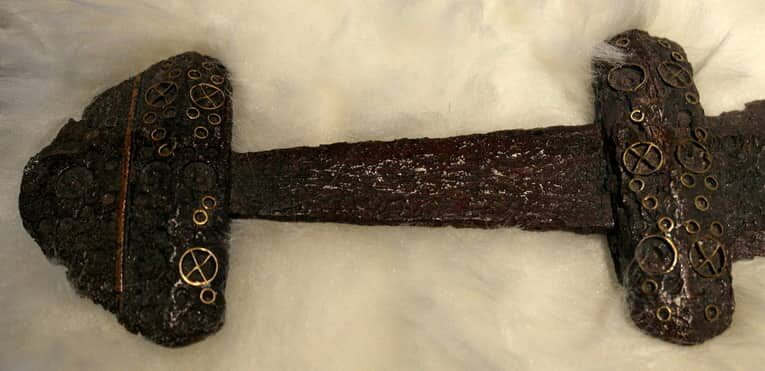
Did Vikings and the Romans ever Meet in Battle?
To a military historian, a battle between the Vikings and the Romans at the peak of their powers is a tantalizing scenario, but it is one that never came to pass.
By the time the Vikings staged their first raid at Lindisfarne, off the east coast of England in 793, nearly four centuries had passed since the Romans hurriedly returned to Rome to defend it against rising threats, leaving England to fend for itself. (Also see Types of Viking Shields: Designs, Colors, and Meanings)
In a roundabout way, the departure of the Romans from England and the collapse of the Western Roman Empire just a few decades later set forth a chain of events and circumstances that would eventually lead to the Vikings’ rise to power.
By capitalizing on political instability in England, the Vikings initiated a series of regional power moves that vastly increased their wealth and greatly expanded their influence.
But as far as a battle royale between the Vikings and the Romans is concerned, such a historic military showdown was not meant to be.
How exactly did the Vikings fight? See What Weapons Did the Vikings Use? the Top 5 to learn more.
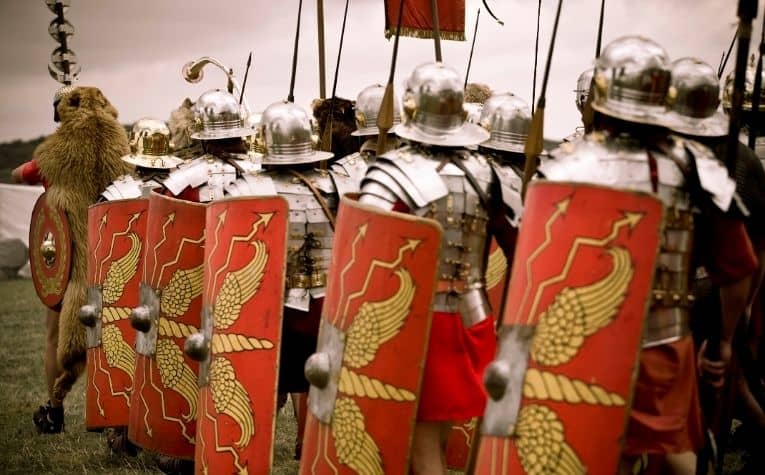
The Furthest Reaches of the Roman Empire
By declaring himself emperor of Rome in 31 BC, Augustus Caesar formally laid the foundation for the creation of the great Roman Empire, which would continue through 1453 (an incredible period of 1,484 years) when Constantinople fell to the Ottomans.
At its peak, the Roman Empire stretched from the Middle East and Northern Africa, across large swaths of Europe, all the way to the British Isles and parts of what is now Germany.
In 324, the Roman emperor Constantine relocated the empire’s capital to Byzantine (modern-day Istanbul, Turkey), which was renamed after him and known thereafter as Constantinople. (Also see What Kind of Clothes Did the Vikings Wear?)
Constantine was succeeded by Theodosius, who is best remembered for splitting the Roman Empire into Western and Eastern portions ruled separately by his sons.
Arcadius ruled over the Eastern Roman Empire (also known as the Byzantine Empire), and Honorius was made emperor of the Western Roman Empire. [1]
As vast as the Roman Empire was during the peak of its aggressive expansion (24 modern-day countries were within its boundaries) and despite an estimated 54 million people living under its control during the 2nd century, the Romans never ventured as far north as Scandinavia.
In fact, the Romans’ northernmost conquests were stalled in Germany, thanks to the Germanic tribes that gave them fits. [2] [3]
Were the Vikings unusually big people? See Were the Vikings Tall? to learn more.
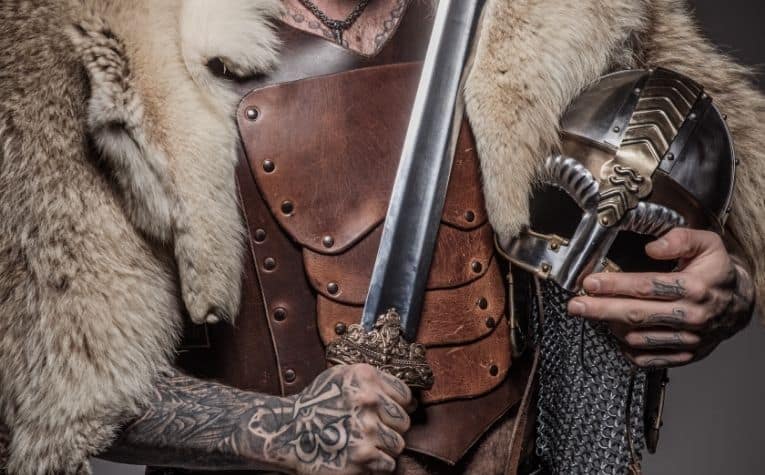
Norse Expansion During the Viking Age
Even though the Viking Age was significantly shorter in length than the Roman Empire (two and a half centuries versus nearly 1,500 years), the Vikings had an enormous impact that extended far beyond Northern Europe and encompassed more than military conquests.
Thanks in large part to their iconic longships and unparalleled seamanship, the Vikings were successful raiders, traders, and explorers.
- Raiding – their military conquests included England (where they established Danelaw), Ireland (where they founded the city of Dublin), France (where they colonized Normandy), and Scotland (where they established settlements).
Following the Romans’ footsteps centuries prior, the Vikings not only conquered these lands but settled in them, eventually becoming part of their rich cultural histories.
- Trading – aside from trade partners in Europe, the Vikings ventured as far away as the Byzantine Empire (modern-day Turkey and areas around the Mediterranean and Black Seas) to engage in commercial activities.
- Exploration – the Vikings’ bravery on the battlefield may have been matched only by their fearlessness on the high seas. Viking explorers traveled as far away as Iceland and Greenland, where they established settlements. Evidence supports the notion that they even set foot on North American soil, centuries before Columbus. [4]
A lot of people wonder what the Vikings looked like. See Did the Vikings Wear Dreadlocks? to learn more.
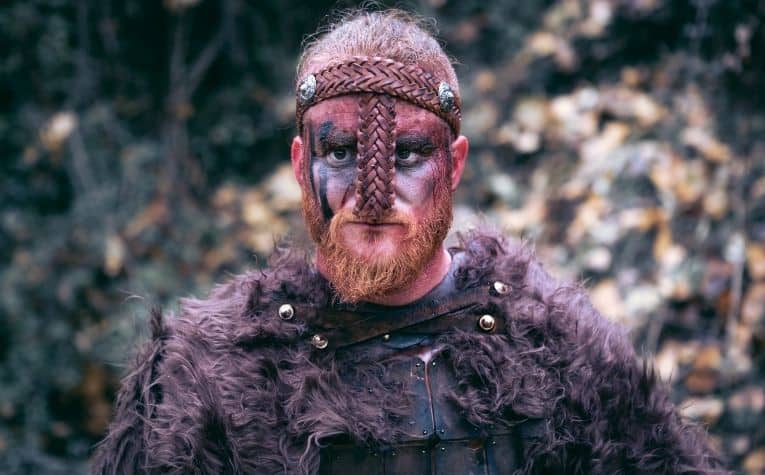
The Fall of the Roman Empire (Western)
Since its founding before the beginning of the common era, the Roman Empire grew rapidly from its origins in Rome and then throughout Europe and surrounding regions. (Also see Did the Vikings Ever Fight the Samurai?)
It was during this process of aggressive expansion, however, that some of the seeds of that which would later bring about the Roman Empire’s collapse were sown. By the year 476, the Western Roman Empire was no more.
Although scholars and historians point to several factors that contributed to the fall of the Roman Empire, most agree that several key causes brought about the collapse of one of history’s greatest superpowers:
- Overexpansion – much of the Romans’ successes can be attributed to their military might and their numerous conquests. But maintaining and governing these new territories proved to be expensive and, eventually, too difficult to manage, resulting in precious and dwindling resources being spread too thinly across the empire.
- Invasions by hostile tribes – throughout the 4th and 5th centuries, the Roman Empire was plagued by incursions and invasions by hostile tribes (often referred to as “barbarians”), in particular, those of Germanic descent. In 476, a Germanic chieftain named Odoacer seized control of Rome, marking the end of the Western Roman Empire.
- Political corruption – the final century of the Roman Empire was marked by a revolving door of emperors (no less than 20 emperors in a 75-year span), many of whom were assassinated. Greed and corruption also consumed the senate.
- Weakening military – over time, the once-vaunted Roman legions that were comprised of fiercely loyal, highly-trained soldiers became a ragtag collection of mercenaries whose loyalty would turn to the highest bidder in many cases. [5]
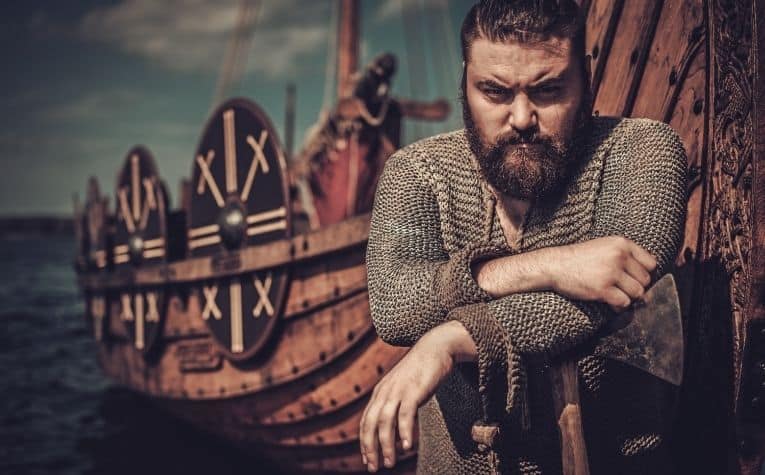
The Rise of the Vikings
When the Romans abruptly abandoned their interests in England and hightailed it back to Rome, a power vacuum was created that various rival groups were eager to fill. [6]
A Viking and Roman Connection in Constantinople
Viking warriors and Roman legionnaires (also known as legionaries) never encountered each other in battle. Not only had the Roman Empire steered clear of Scandinavia, but they also lived centuries apart. (Also see Did the Vikings Paint Their Faces?)
There was, however, a rather strong connection between the Vikings and the Eastern Roman Empire, and it did involve vicious fighting, but not in the way one would think.
Rather than being combative in nature, the connection between Vikings and the Roman civilization in Constantinople was a cooperative association that benefited both parties.
During the reign of Emperor Basil II, the Eastern Roman Empire was under constant threat from hostile tribes and even military leaders from within the Empire. (Also see How Did Vikings Propose and Get Married?)
Also see Why Did the Vikings Say Skol? to learn more.
The Varangian Guard
To quell any potential uprisings within his ranks and deter any outsiders with designs on Constantinople’s riches, Basil II approached Vladimir I, ruler of the Kievan Rus’ (an area that is now comprised of modern-day Russia, Belarus, and Ukraine) with a proposal. (Also see Did the Vikings Have to Die with Sword in Hand to Reach Valhalla?)
Vladimir I was a direct descendant of Norse people who had settled in the area to cash in on lucrative trade routes, and so too were the majority of his armies’ rank and file. In other words, they were all Viking warriors.
Vladimir I’s elite soldiers would become Basil II’s personal crack fighting unit while doubling as royal bodyguards in exchange for conversion to Christianity and wealth beyond their wildest dreams.
The result of this alliance was the formation of the Varangian Guard, who would be considered one of the world’s most feared fighting forces for several centuries to come.
Leave it to a society with an unrivaled military pedigree honed by centuries of conquests to recognize the elite fighting capabilities of direct Viking descendants and retain their services as a security detail the world had never seen. [7]
Conclusion
Although they peaked centuries apart, at the height of their powers, the Vikings and Romans were the most feared fighting forces on the planet.
References:
[1] Source
[2] Source
[3] Source
[4] Source
[5] Source
[6] Source
[7] Source
